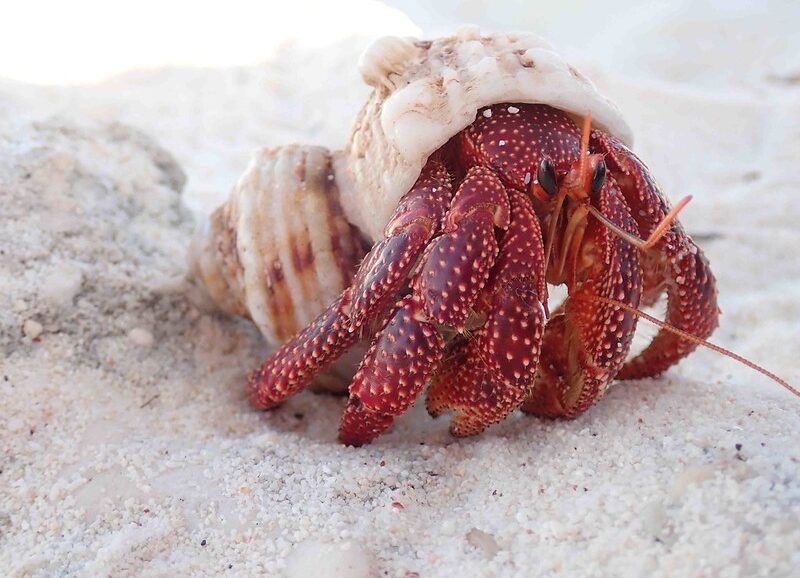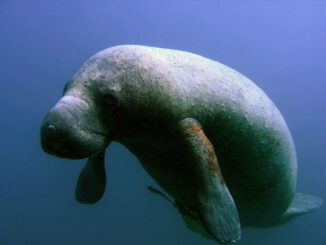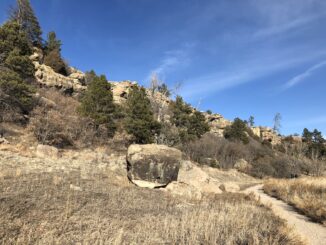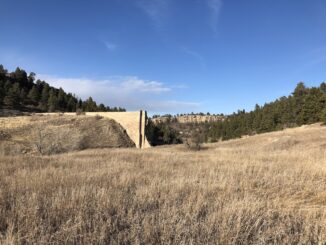
With the world facing a biodiversity crisis, conservation-minded nations are racing to preserve almost one-third of the planet for the benefit of plants and wildlife.
However, one expert is cautioning that how nations define “protection” will vary wildly as governments are allowed to maintain biodiversity however best they see fit. Conservation advocates shouldn’t expect a huge increase in the number of “no-touch” conservation zones, he says.
“That’s really not possible in this day and age we live in,” said Ryan Finchum, an environmental scientist at Colorado State University. “The vast majority of the newly created areas that are going to have to be established are going to be…areas that are established for multiple uses, not just for strict protection.”
Finchum is a faculty member at CSU’s Warner College of Natural Resources and Co-Director of the Center for Protected Area Management.
In an extensive interview with Public Parks, Finchum shared his thoughts on the global movement to preserve more lands and waterways for wildlife under the United Nations Convention on Biological Diversity (CBD).
He has spent a considerable amount of time in Peru, particularly at Manu National Park where he’s studying conservation practices while working with communities and authorities on national park management initiatives.
A long-time ecotourism guide, Finchum is knowledgeable of the various types of protected public lands and levels of conservation, from strictly wild areas largely off-limits to human hands, to mixed-use properties where natural resource exploitation still regularly occurs.
CBD member governments have pledged to preserve 30% of the world’s surface by 2030 for the benefit of endangered animals and plants. Finchum warns that they may not make that goal, and the regime that does emerge isn’t likely to satisfy proponents of employing strict conservation measures to put a halt to the ongoing, human-driven mass extinction event.
“You do want some areas that are like the jewels, right, that are of outstanding usually landscape value, that are just places that we want to be able to go and bring our kids to be inspired by these amazing landscapes,” he said. “But the reality of it is that we all need resources. We all need to make a living.”
The following is a Q&A summarizing Public Parks’ interview with CSU Center for Protected Area Management Co-Director Ryan Finchum.
PP: What do you do, and why is it so difficult?
Finchum: I run a small center that we have in the Warner College of Natural Resources here at CSU called the Center for Protected Area Management. It’s essentially a center that was created primarily due to the fact that there’s been a rampant increase in the establishment of protected areas around the globe of a variety of different categories and different types of governance, but [advanced] this idea of setting aside land, whether in national parks or forest reserves of whatever kind, whether public lands or not. It’s something that the world kind of collectively agreed to do.
There’s no other actual human land use decision that takes up a larger percentage of the Earth’s surface than protected areas when you incorporate both land and seas. But what we found was that people were creating these areas, hiring people and not necessarily having the capacity, both financial but also just technical skills approaches and things like that, to be able to help ensure that these areas were going to achieve the objectives for which they were established.
That’s kind of why our center exists.
We come in and we work with host country governments, with non-profit organizations, with indigenous communities to understand what the needs are based on where people are and what they’re trying to manage for and then trying to figure out how we can develop programs that will help support them.
PP: The Convention on Biological Diversity has set a goal of preserving 30% of the world’s surface by 2030 to protect and preserve biodiversity. How realistic is this goal?
Finchum: To get to 30 by 30, it’s my opinion that the vast majority of the newly created areas that are going to have to be established are going to be areas that are established, one, for multiple uses, not just for strict protection, and two, they’re going to be established with a variety of different governance structures. And I think most of them are going to be managed at the sub-national level or at the local community or indigenous community level.
Very few additional national parks with strict protection are going to be created. These are going to be other types of areas with other stakeholders and rights holders involved in daily protection. So, this, for us, is one of the things that’s really driving a lot of our work because we think there’s gonna be huge potential.
You know, you can create and set aside an area but if you don’t have caretakers that are actually dedicated to looking after these lands, then you have no way of actually monitoring and understanding whether it’s going to achieve its objectives over time. And so just pure capacity, sharing capacity, and development that’s going to be necessary.
Also, I think there’s going to be huge potential for getting traditional protected area constituents with these new partners together to learn from each other. We’re seeing a lot of increase in indigenous communities around the world finally getting lands that they’ve already always protected for their own cultural values as protected areas, but ones where they are guaranteed to retain the rights too.
There’s I think a lot of concern globally that if we’re going to try to achieve 30 by 30, if we’re going to try to achieve it in the traditional ways that’s going to lead to a lot of human rights abuses. And that can’t happen.
PP: Are you optimistic that we’ll reach the 30 by 30 goal?
Finchum: Are we going to make 30 by 30? No.
We’re sitting at about 17% of the Earth’s land surface and about 8% of the oceans [protected]. To go from eight percent to 30% percent of the oceans?
It’s good to set goals so that we’re trying to do things, but you know, the time frame is not going to work because if we’re going to do it in a way that’s actually equitable, it takes more time. It takes time to sit down and talk to people and understand their needs and figure out what’s going to work.
So, it’s a big challenge. It’s a good starting goal to have, but it’s, you know, I’m not sure we’re going to make it.
PP: Do you have a preference for the level of projections would should ideally achieve?
Finchum: I think it has to be all of the above, right?
“You do want some areas that are like the jewels, right, that are of outstanding usually landscape value, that are just places that we want to be able to go and bring our kids to be inspired by these amazing landscapes,” he said. “But the reality of it is that we all need resources. We all need to make a living. We have we have our cell phones, and we have our computers and that requires mining, and we need to harvest and extract resources, and we need to eat.
I really think that it’s an all-of-the-above approach. I think it’s actually easier to achieve conservation of the more restrictive areas when you actually can say, “Yeah, we’re not going to extract resources here but look, we have all these other areas.”
And you can’t just go willy-nilly and do whatever you want. We are going to monitor, we’re going to measure for environmental impact, but you can harvest over time as long as we’re checking and making sure we’re doing things well.
This idea of, kind of like the biosphere reserves is, I think, a great concept. And almost we need to get to the point where we think of the entire Earth as a biosphere reserve, where we have these core areas where they’re kind of like no-take zones, whether, you know, in terms of it could be marine, it could be terrestrial.
I think I think if we look back into history, humans have always been a part of the landscape.
PP: Will it be a huge disaster if governments don’t achieve the “30 by 30” target, which is only five years away?
Finchum: I’m inherently an optimistic person.
I think having the 30 by 30 goal is going to help us achieve more than we would have achieved if we didn’t have the 30 by 30 goals. And so it certainly is a driver, even though we don’t kind of always get there.
I think a lot of times with these international goals, a lot of people who are working to establish them don’t actually think we’re going to truly reach them. But you’re setting the bar high so that we can reach higher than we might have reached otherwise.
And so because I’m inherently positive, me saying that I don’t think we’re going to meet it, it’s not because I don’t think we’re capable of it. I think we’ve purposely set the goal high, the bar high, so that we can reach for higher goals than we would have achieved otherwise.
What we get to see is the men and women who are working all over the globe. We’ve now worked with over 17,000 people from 18 countries through our center’s training programs, and wow, just the creativity, the dedication, the level of understanding, the care that people have not only for wildlife but for the local communities, I’m inspired every day by the people who we work with, who come through our training programs.
They’re from every walk of life from all across the planet and they all have this incredible lifelong calling, this dedication to protecting these wild spaces for nature and for humans. It gives me a lot of hope.”



